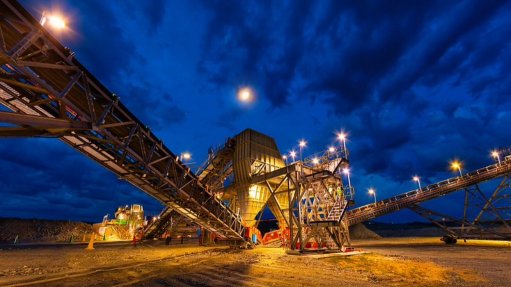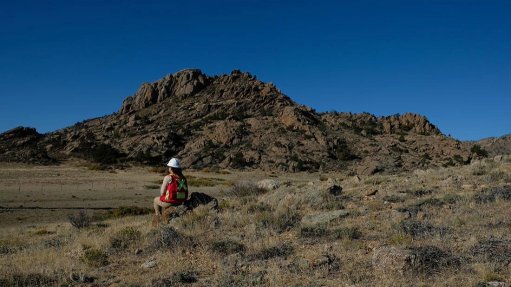Facets of progress in mine health and safety
While there has been some progress in health and safety in several areas in the mining sector, and initiatives are realising some results, much work still remains to be done.
This was outlined during industry body Minerals Council South Africa’s sixth yearly National Day of Health and Safety in Mining, held on August 17 under the theme: ‘Always: Vigilance, Learning, Improving’ which aims to illustrate industry efforts to address health and safety in the quest to achieve the common goal of zero harm.
Stakeholders agreed to collaborate as they recommitted to the interventions and initiatives to achieve zero harm.
Department of Mineral Resources and Energy (DMRE) Chief Inspector of Mines David Msiza pointed out that the latest statistics this year were “not encouraging”.
Also, he noted that the sector had a significant increase in the number of fall-of-ground (FoG) incidents, from two to eight thus far this year.
“However, it is worth noting that, since the gazetting of new trackless mobile machines regulation in December 2022, there has been a significant decrease in the number of transport and mining fatalities from nine to three, which corresponds to 67% improvement. The general type of accidents are the second biggest contributor to the fatalities in the sector this year,” Msiza highlighted.
He added that coal mines had not experienced FoG-related fatalities for the year up to date, with most FoG incidents occurring in gold mines.
Msiza said there had also been an increase in the number of seismic-related FoG incidents.
Moreover, he noted that the sector this year had already reported three fatalities which were classified under the category miscellaneous, and called on the sector to expedite the finalisation of investigations involving miscellaneous accidents.
There was a 4% decrease in the number of injuries from 1 273 to 1 225. The areas of concern in this regard included explosives injuries that increased from one to four; heat exhaustion from three to ten cases and electricity injuries from eight to eleven, Msiza said.
He added that another area of concern is the considerable increase in miscellaneous injuries.
In the quarter from April to June, the mines reported a total of 357 occupational diseases from the Health Incident Reports submitted when compared with 298 reported during the same period in 2022.
This corresponds to 20% regression year-on-year. The areas of concern in health are noise-induced hearing loss cases increasing from 66 to 122; chronic obstructive airway disease cases up from 17 to 22; and six silicosis cases growing from 37 to 45.
Msiza said the sector was being encouraged to implement effective measures for improving the wellbeing of mineworkers including mitigating the impact of non-communicable diseases.
PROGRESS AND INITIATIVES
The goal for the event, since its inception, has been to showcase efforts made by the industry in addressing health and safety-related issues, to reinforce commitment, and learn and collaborate towards the common goal of zero harm.
The CEO-led Khumbul’ekhaya Health and Safety Strategy aspires to have all employees return home unharmed every day.
Minerals Council president Nolitha Fakude said the campaign, started in 2019, is starting to see results, as for the first time in history, the industry recorded fewer than 50 fatalities in a calendar year.
“Nonetheless, the Minerals Council mourns the tragic loss of 49 employees who perished in mine accidents in 2022,” she noted.
Fakude also highlighted the performance of January, which was a fatality-free month.
However, she emphasised that the industry still faces many safety challenges.
“Indications in the first seven months of 2023 suggest that we need to continue to tirelessly implement effective strategies to improve health and safety performance and achieve zero harm. Again, there is a need for tripartite stakeholders to continue to collaboratively work together towards the common objective of zero harm,” Fakude said.
“In the occupational health sphere, we are pleased to see continuing reductions over the years, in the incidence of most occupational diseases. We, however, did note the increase in reported occupational diseases from 2022,” Fakude outlined. There was an increase in reporting after the pandemic period.
Fakude highlighted the biggest achievement as the reduction of tuberculosis (TB) in the sector.
The industry met the TB milestone of having a TB incidence below the South African one in 2017. In 2022, its TB incidence was 241/100 000, below the national incidence which is around 500/100 000.
“We are, however, fully aware that TB in our gold sector is still high, at around the national incidence. This has prompted our Health Policy Committee to establish a Gold TB Working Group that will focus on all interventions possible to reduce TB in the gold sector,” Fakude informed.
She also highlighted progress by the DMRE on the reporting of occupational diseases, with statistics on occupational diseases in the previous quarter now available compared to previously long lead times.
“This is a major development, and we hope to see it extended to occupational exposures as they are the leading indicator for diseases. Reduction of exposures should be our primary focus,” Fakude said.
Fakude noted that there was also work being undertaken to eliminate gender discrimination in mining as work continued to increase the presence of women in mining occupations.
In the year to date, two women have succumbed to their injuries and 133 have been injured. This compares to three fatalities and 217 injuries for the full year of 2022. The previous year, 2021, one woman died and 166 were injured at work.
“A critical part of that work is the need to invest significant time and energy in addressing the issue of gender-based violence,” she emphasised, with this being done through the Council’s women in mining programme and the Mine Health and Safety Council’s Women in Mining Advisory.
There is also the continued focus on providing personal protective equipment designed for women, and ensuring that the physical environment in which women employees work is one that takes their health and safety needs fully into account, Fakude added.
Msiza said it was “encouraging” that the 2022 safety performance reflected the lowest fatalities ever recorded in the sector of 49 fatalities compared with 74 in 2021, and with no mine disaster reported since 2018.
Also, the sector reported a decrease in the number of injuries and occupational diseases during 2022 when compared to the previous year.
“It is also important for all stakeholders to remain vigilant in the remaining months of 2023 and avoid any issues of complacency. As a department we will continue to engage with all CEOs and union leadership to ensure that more can be done to improve health and safety in our sector,” Msiza emphasised.
Comments
Press Office
Announcements
What's On
Subscribe to improve your user experience...
Option 1 (equivalent of R125 a month):
Receive a weekly copy of Creamer Media's Engineering News & Mining Weekly magazine
(print copy for those in South Africa and e-magazine for those outside of South Africa)
Receive daily email newsletters
Access to full search results
Access archive of magazine back copies
Access to Projects in Progress
Access to ONE Research Report of your choice in PDF format
Option 2 (equivalent of R375 a month):
All benefits from Option 1
PLUS
Access to Creamer Media's Research Channel Africa for ALL Research Reports, in PDF format, on various industrial and mining sectors
including Electricity; Water; Energy Transition; Hydrogen; Roads, Rail and Ports; Coal; Gold; Platinum; Battery Metals; etc.
Already a subscriber?
Forgotten your password?
Receive weekly copy of Creamer Media's Engineering News & Mining Weekly magazine (print copy for those in South Africa and e-magazine for those outside of South Africa)
➕
Recieve daily email newsletters
➕
Access to full search results
➕
Access archive of magazine back copies
➕
Access to Projects in Progress
➕
Access to ONE Research Report of your choice in PDF format
RESEARCH CHANNEL AFRICA
R4500 (equivalent of R375 a month)
SUBSCRIBEAll benefits from Option 1
➕
Access to Creamer Media's Research Channel Africa for ALL Research Reports on various industrial and mining sectors, in PDF format, including on:
Electricity
➕
Water
➕
Energy Transition
➕
Hydrogen
➕
Roads, Rail and Ports
➕
Coal
➕
Gold
➕
Platinum
➕
Battery Metals
➕
etc.
Receive all benefits from Option 1 or Option 2 delivered to numerous people at your company
➕
Multiple User names and Passwords for simultaneous log-ins
➕
Intranet integration access to all in your organisation





















